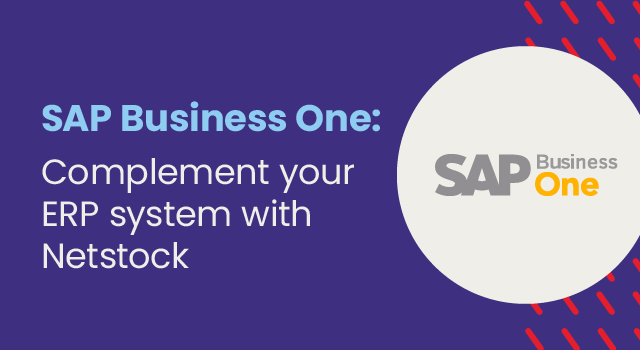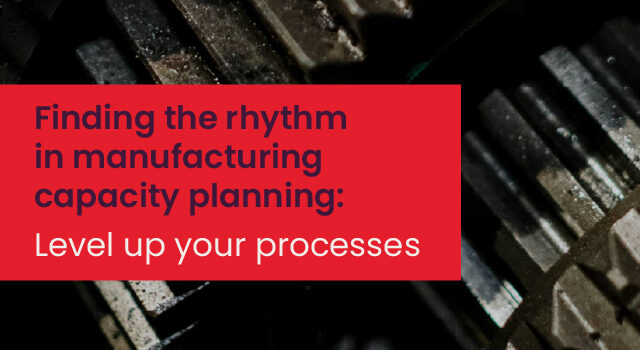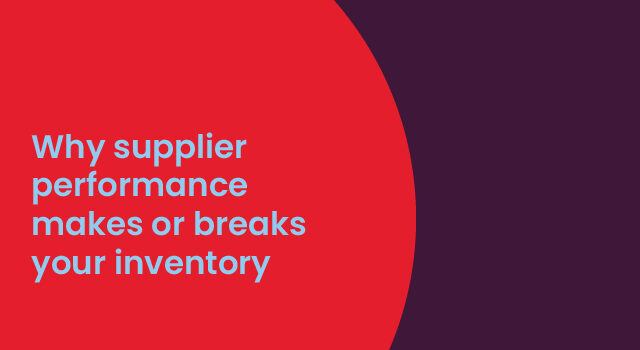Predictive analytics has reshaped the modern supply chain and provides key insights that help anticipate demand, optimize inventory, and streamline logistics. This proactive approach drastically boosts efficiency, reduces costs, and enhances customer satisfaction.
As competition grows, predictive analytics tools become a priority investment for staying ahead. In this article, you’ll learn how predictive predictive analytics optimize supply chain operations. You’ll also get valuable know-how on implementing the right predictive analytics platform.
Understanding Predictive Analytics
Predictive analytics involves analyzing historical data using statistical algorithms and machine learning techniques to forecast future outcomes. This foresight helps supply chain managers cut costs and enhance customer satisfaction and profits by ensuring products are available when needed.
Let’s examine the key components that make predictive analytics so powerful.
What are the key components of predictive analytics?
The key components of predictive analytics are data mining, machine learning(ML), and statistical analysis. Each component plays its role in providing the key decision-making data for supply chain managers.
- Data mining: This process involves extracting useful information from large datasets. In supply chains, data mining identifies patterns and trends that can predict future demand or potential disruptions.
- Machine learning: Advanced algorithms learn from historical data to predict future events. Netstock, for instance, has amazing ML capabilities that help companies understand and forecast actual demand.
- Statistical analysis: This component uses statistical methods to interpret data and make predictions. It helps planners understand demand variability and improve inventory management.
Types of advanced analytics
The mentioned components take shape in different types of analytics that address supply chain challenges:
- Descriptive analytics summarizes past data to understand what happened in the supply chain. It’s used for reporting and identifying historical trends.
- Diagnostic analytics go a step further and explain why certain events occurred. In supply chains, they help identify causes of delays or stockouts.
- Predictive analytics use historical data to predict future outcomes. They are used to generate demand forecasts or detect potential supply chain disruptions.
- Prescriptive analytics suggest actions based on predictive insights. For example, they recommend optimal inventory levels or the best shipping routes.
Key benefits of predictive analytics in supply chains
Predictive analytics is a game-changer for supply chains. Implementing them greatly benefits all the key operations of your supply chain, resulting in business success. Here’s how:
- Demand forecasting: Predictive analytics enhance demand forecasting accuracy, enabling effective inventory planning. This foresight ensures you meet customer needs without overstocking, reduce waste, and optimize resources.
- Inventory optimization: Balancing inventory levels prevents overstocking and stock-outs. Predictive analytics analyzes consumption patterns to maintain optimal inventory levels. This balance reduces holding costs and improves cash flow.
- Production scheduling: Predictive analytics optimizes production processes and schedules. Accurate demand estimates help align production to meet market needs, minimizing idle time and maximizing resource use.
- Risk management: Predictive analytics helps identify and mitigate supply chain risks. Analyzing data on supplier performance and logistics disruptions allows you to address issues proactively. This approach ensures a smooth and reliable supply chain operation.
Practical applications and use cases
The benefits of predictive analytics extend beyond demand forecasting, inventory optimization, risk management, and production scheduling. They impact other practical areas of the supply chain, such as logistics, transportation, and maintenance.
Logistics and transportation management
In logistics, predictive analytics enables real-time tracking, route optimization, and effective fleet management. Analyzing data from multiple sources allows businesses to predict traffic patterns and optimize delivery routes, reducing fuel costs and improving delivery times.
Predictive maintenance
Predictive analytics is crucial in preventing equipment failures and reducing downtime. Analyzing data from machinery sensors allows predictive models to forecast potential failures, enabling timely maintenance. This approach extends equipment lifespan and ensures uninterrupted operations.
Netstock’s Predictive Planning Suite
Netstock’s Predictive Planning Suite is a comprehensive solution to help small and medium-sized businesses optimize their supply chain operations.
The suite fully leverages advanced predictive analytics to enhance efficiency, reduce costs, and boost competitiveness. It also provides:
- Robust forecasting capabilities powered by AI and Machine Learning technology: enabling businesses to accurately predict supply and demand.
- Automated replenishment features: maintaining optimal inventory levels and helps avoid stock-outs and excess inventory.
- Full visibility through a single-view dashboard: the dashboard makes monitoring inventory levels, reorder points, lead times, and order constraints easy. This enables quick decision-making and aligns supply planning with future demand.
- Inventory classification and supplier performance monitoring: helping manage disruptions and improve lead time reliability.
Netstock’s Predictive Planning Suite offers the scalability and flexibility to grow with your business, enabling you to quickly adapt to shifting market demands and stay ahead of the competition.
Success with Netstock: Hartland Controls
Netstock has earned the trust of over 2,400 companies worldwide, achieving remarkable results using its predictive analytics.A manufacturing company, Hartland Controls, utilized Netstock’s solutions to gain better visibility into its inventory management. The company struggled with maintaining appropriate stock levels, often resulting in overstocking or running out of critical components.
“We have full visibility of our potential stock-outs and could take actionable steps to avoid stock-outs from occurring. With the help of the advanced algorithms, we were able to do our forecasts with confidence and would not have been able to bounce back as quickly as we did from COVID-19 without Netstock – Supply Chain Manager, Hartland Controls.
Netstock’s predictive analytics helped Hartland Controls reduce its inventory value by $1,000,000. This optimization freed up capital and ensured that they could more effectively meet production demands.
Read more about their success here
Implementation strategies
Proper implementation of predictive analytics is the first step in unlocking its full potential. Before you choose your predictive analytics solution, you must understand the importance of healthy data collection practices and be aware of the implementation challenges.
Data collection and management
High-quality data is the backbone of effective predictive analytics. Accurate and comprehensive data collection ensures that the insights derived are reliable and actionable. Implement robust data management practices (like regular data audits and validation processes) and maintain data integrity. Utilize automated systems for data collection to reduce errors and ensure consistency across datasets.
Choosing the right tools
Select the right predictive analytics software based on the features that align with your business needs. Consider criteria like scalability or integration capabilities with existing systems.
Netstock’s predictive inventory optimization solution is designed to meet all the requirements of a modern solution for modern supply chains. The app’s user-friendly interface and seamless integration make it ideal for businesses looking to enhance their supply chain operations.
Overcoming challenges
Implementing predictive analytics in supply chains can be challenging due to data quality issues, resistance to change, and integration complexities. Invest in training and change management programs to overcome these hurdles. Healthy data governance practices mitigate data quality problems. Never compromise on integration capabilities, as they ease the transition and ensure smooth implementation.
Future trends in predictive analytics for supply chains
Predictive analytics will continue to evolve and bring new opportunities for supply chains. The emerging trends highlight predictive analytics’ transformative potential and focus on greater efficiency and sustainability.
- AI and Machine Learning: Advanced technologies like AI and machine learning will continue to enhance predictive analytics. They process vast amounts of data quickly and accurately. This capability allows for more precise demand forecasts and improved demand plans.
- Automation and autonomous supply chains: Automation improves efficiency and reduces errors, leading to smoother operations.
Predictive analytics is paving the way for automation in supply chains. The goal is to create self-orchestrating supply chains that eventually manage themselves with minimal human intervention.
- Sustainability and efficiency: Predictive analytics also supports sustainable practices. It already optimizes routes and inventory, so companies reduce waste and energy use. This approach lowers the environmental impact of supply chain activities.
The future of supply chain with predictive analytics
Predictive analytics enhance the efficiency of all major supply chain operations, such as demand forecasting, inventory optimization, production scheduling, and risk management. As technology advances, predictive analytics will continue to evolve, offering even greater potential for supply chain improvements.




